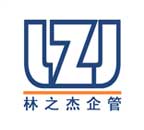If you've been in business for a long time, you probably have a lot of documentation. Chances are much of it is uncontrolled, inadequate or even obsolete. If you're a start-up you probably don't have much documentation. In either case, ISO 9001 documentation standards are very clear. This is an area that requires attention to detail, commitment to effective implementation and to maintenance.
One good way to start this process is to separate your documentation into tiers, with each tier representing a different level of detail.
Tier One: Quality Manual. Required by ISO 9001, this manual identifies the strategies and policies of your organization and relates, on a macro-level scale, how your organization will address the requirements of the standard, and answers the question, "Why does your business do what it does?"
Tier Two: Processes and Procedures. Next, your organization will need to identify the processes under which your company operates. Often, these processes can be separated into two groups: "key" processes (sometimes referred to as "customer-oriented" processes) and, support processes (e.g., organizational processes supporting key processes such as human resources, training, preventive maintenance, document and data control, etc.). Some processes, depending upon their criticality to your organization or whether they are addressing specific requirements of ISO 9001:2000, may have to be documented in a formal procedure. Other processes simply may be described in the Quality Manual with sufficient detail to ensure the process is capable of being understood and effectively implemented. Either way, processes and procedures should detail such aspects as what should be done, when and where it will be done and who will do it?
Tier Three: Work Instructions. Work instructions provide details on how specific tasks or operations, as identified in Tier 2 Processes and Procedures, are to be performed. The need for work instructions can be based upon the complexity and / or criticality of the task at hand and the qualification and competency of the workforce.
Tier Four: Quality Records. To some extent, your organization will have to add a fourth tier to include forms, charts, illustrations or checklists used on a daily basis. These documents are generically referred to as Quality Records as they demonstrate evidence of activities performed or results achieved.
Organizational processes and documented procedures are a critical part of an ISO 9001 quality management system. They define the correct and proper operation of a company from a quality perspective and are applicable to all operations within your organization, to include product development, service provision, production and delivery systems. An independent ISO 9001 Registrar (quality auditing organization) verifies that processes and procedures are followed and, that the quality management system is effective in achieving your organizations' objectives.
It may appear that ISO 9001 generates a huge amount of documentation, however, many companies find that it actually reduces their dependence on paper. As not all processes are required to be documented in procedure form, and the determination of the need for documented procedures and work instructions is based upon many different factors, processes may also be "documented" in the form of flowcharts, visual aids, data bases, and other media forms. |

